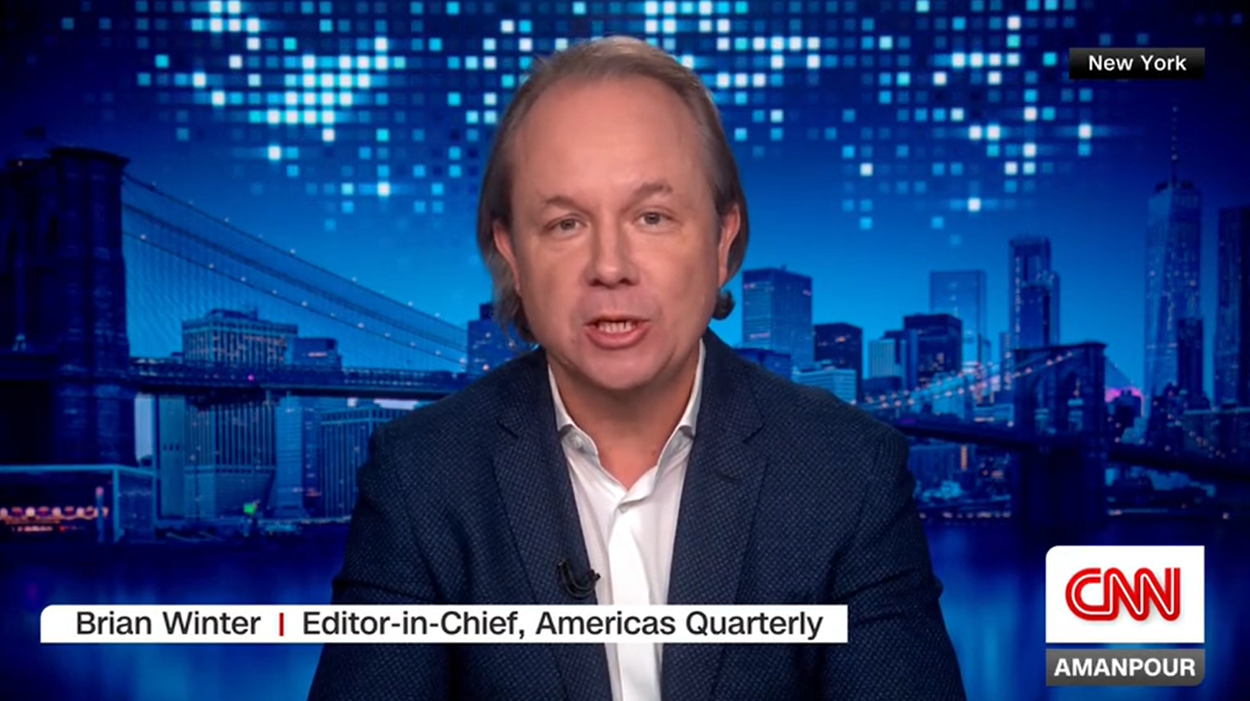Piñera and Humala's DC Visits Showcase Asia-Pacific Connections
Piñera and Humala's DC Visits Showcase Asia-Pacific Connections
Trips to the White House by the presidents of Chile and Peru spotlighted the latest efforts toward Pacific Rim integration.
During the last two weeks, two South American presidents visited Washington to talk trade and regional efforts to open markets, particularly with Asia. Chilean President Sebastián Piñera met with U.S. President Barack Obama on June 4, while Peruvian President Ollanta Humala visited the White House on June 11. On the agenda for both Latin American leaders was the Trans-Pacific Partnership (TPP), a free-trade agreement under negotiation between 11 Pacific-rim countries, including Chile, Peru, and the United States. The presidents also focused on progress made by the Pacific Alliance, a trade bloc seeking integrated markets in four Latin American countries and closer commercial ties to Asia. The two visits also came days apart from Obama’s summit with the president of China—a major trade partner for all three countries, but not a member of the TPP or an Alliance observer.
During Piñera’s Washington visit on June 3 and 4—which included an unusual break with protocol when the leader sat at Obama’s desk—much of the conversation zeroed in on commercial relations. In 2004, a free-trade accord between Chile and the United States went into effect, leading bilateral trade to more than triple. Now, the TPP is the next step in expanding commercial flows; another negotiation round begins on July 15 in Malaysia, while the last round took place in Lima in May. In DC, Piñera commented on Japan’s possible entry as the twelfth member of the TPP next month, saying the Asian country’s membership could change the timeline for the agreement but was “worthwhile.”
Humala also talked up the TPP and Pacific Alliance during his June 10 to 11 stay in Washington—his first official visit since Peru’s 2011 presidential election. With Piñera, Obama extolled the Alliance, saying it is “pointing the way for a model of economic development and growth throughout the region that I think a lot of people are paying attention to.” In fact, the United States is interested in becoming an observer of the bloc, as U.S. Vice President Joe Biden remarked during his May visit to Colombia. Assessing the Pacific Alliance in World Politics Review, COA’s Eric Farnsworth wrote: “The establishment of a new center of gravity in hemispheric trade that includes those nations willing and capable of working with the United States and motivated to play a constructive role creates an important opportunity to build a region-wide movement toward open markets.”
While both the TPP and Pacific Alliance have an eye on Asia, both notably lack a regional giant: China. This country was the focus of U.S. foreign policy last week, as Piñera and Humala’s visits sandwiched Chinese President Xi Jinping’s much-hyped summit with Obama. While Obama hailed efforts to boost bilateral trade with Chile and Peru, China continues as the number one destination for Chilean and Peruvian exports, largely consisting of natural resources. And though it’s not a part of either trade bloc, China is blazing ahead with large-scale investments in Latin America; Xi chose to pay a visit to Costa Rica, Mexico, and Trinidad and Tobago before heading to the United States.
But during their trips to Washington, the two South American leaders also made progress on other issues. Humala spoke about anti-drug trafficking efforts and social inclusion programs with Obama, who aims to increase Peru’s counter-narcotics and development assistance by over $20 million. Currently, the two countries have joint efforts to pursue organized crime groups, reduce cocaine production, and provide alternatives to coca growers, among others. The Chilean president, meanwhile, made strides on travel regulations. Following a meeting with U.S. Secretary of State John Kerry, Piñera announced that Chile will join the U.S. Visa Waiver Program, eliminating visa requirements for Chilean citizens who wish to visit the United States for up to 90 days. After a U.S. delegation visits the South American country to ensure it fulfills the necessary requirements, Chile will become the only Latin American country in the program.








